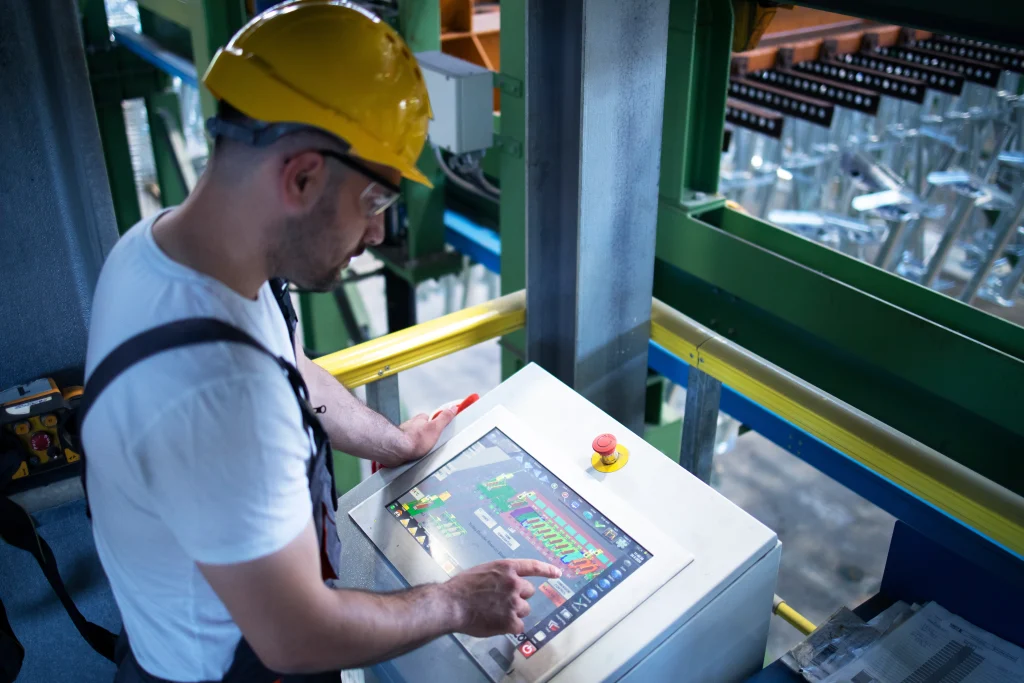
Real-World Application of Pressure Vessels for Automation
Pressure Vessels for Automation are transforming the way OEM systems operate in modern industrial environments. In this case study, we examine a real-world deployment of Pressure Vessels for Automation within a state-of-the-art automated plant in the United States. These OEM pressure vessels were not simply built for containment—they were engineered to integrate seamlessly into smart systems, supporting sensors, control networks, and data-driven processes. By choosing Pressure Vessels for Automation, the facility enhanced not only operational efficiency but also safety and process control, showcasing how these intelligent vessels are essential components in next-generation automated manufacturing.
Project Overview: The Client and Objective
A leading U.S. chemical manufacturer recently upgraded one of its legacy facilities into a fully automated, digitally controlled production environment. The central challenge? Replacing outdated, manually monitored pressure systems with advanced Pressure Vessels for Automation—intelligent, OEM-engineered solutions built to meet the demands of continuous, autonomous operations. These Pressure Vessels for Automation needed to do more than contain pressure—they had to seamlessly integrate with plant-wide control systems and deliver real-time performance insights. The new vessels were required to:
- Seamlessly integrate with PLCs (Programmable Logic Controllers)
- Respond to real-time data inputs
- Support predictive maintenance algorithms
- Maintain code compliance under ASME Section VIII
The goal was to reduce downtime, enhance process control, and enable remote diagnostics.
Design Requirements and Challenges
To meet the specific demands of automated operations, the Pressure Vessels for Automation had to be customized with a range of intelligent features and engineering enhancements. These included:
- Smart sensors for pressure, temperature, and vibration
- Advanced coatings to support CIP (Clean-in-Place) and SIP (Steam-in-Place) protocols
- Multiple access ports for modular interfacing
- Tight volume tolerances for precise metering
- Wireless communication capabilities via Modbus TCP/IP and OPC UA
Thanks to these advanced features, the Pressure Vessels for Automation functioned not just as passive containment units, but as active components of the plant’s smart infrastructure—driving efficiency, improving safety, and enabling data-driven decision-making.
Engineering Highlights
Red River’s engineering team worked closely with plant integrators to finalize a custom design for Pressure Vessels for Automation that would meet both process performance requirements and smart system integration. The result was a vessel solution engineered not only for pressure containment but also for seamless communication with automated controls, real-time monitoring systems, and advanced safety protocols. Consequently, this ensured full compatibility with the plant’s Industry 4.0 infrastructure.
Key engineering features included:
- High-alloy stainless steel construction (SA-240 316L) for durability
- Toroidal head design to minimize turbulence and internal stress
- Embedded smart sensors calibrated to the facility’s SCADA system
- Skid-mounted modular layout for easy repositioning within the factory floor
- ASME U-Stamp certification for regulated material handling applications
This implementation of OEM pressure vessels for automated plants was far more than just a fabrication project—it exemplified systems engineering at its finest. Every vessel was designed to function as a fully integrated component within the plant’s automated architecture, combining structural integrity with intelligent control, data feedback, and seamless interoperability. Therefore, it demonstrated how Pressure Vessels for Automation are redefining the role of traditional equipment in smart manufacturing environments.
Installation and Commissioning Process
The Pressure Vessels for Automation were delivered pre-tested, certified, and fully prepared for rapid deployment. This streamlined approach minimized downtime and accelerated integration into the plant’s smart infrastructure. The integration process included:
- Digital mapping of vessel sensor data directly into the plant’s HMI and control systems
- Configuration of automated alerts for deviations from defined operating conditions
- Simulated process tests using dummy loads to validate system response and vessel behavior under real-world scenarios
- Comprehensive operator training on remote pressure control modules and system monitoring interfaces
As a result of this coordinated effort, installation was completed in under 72 hours, and the full system was live within five business days—exceeding the client’s timeline expectations and reinforcing the value of choosing high-performance Pressure Vessels for Automation in a modern manufacturing environment.
Operational Outcomes and Measured Benefits
After three months of continuous operation, the plant reported significant performance improvements directly tied to the integration of Pressure Vessels for Automation. The key outcomes included:
- 12% increase in overall system efficiency, driven by real-time data monitoring and automated pressure adjustments
- 30% reduction in manual maintenance, thanks to predictive alerts and automated safety responses
- Zero unplanned downtime related to pressure systems, a testament to the reliability of smart vessel integration
- Improved regulatory compliance through automated data logging and documentation of pressure-related events
These results confirm that implementing OEM pressure vessels for automated plants not only supports automation goals but also delivers measurable improvements in reliability, efficiency, and operational control.
Customization for Automation
The integration of Pressure Vessels for Automation in OEM applications goes far beyond just pressure ratings and material specifications—it’s about aligning mechanical engineering with digital intelligence. In today’s Industry 4.0 landscape, Pressure Vessels for Automation must evolve into smart, responsive systems that communicate in real time, adapt to changing conditions, and support predictive maintenance. These vessels are no longer passive components; rather, they are active contributors to the performance, safety, and efficiency of fully automated plants.
Selecting the right OEM partner for your Pressure Vessels for Automation is critical. An experienced partner brings not only fabrication expertise but also the ability to embed digital capabilities—ensuring your vessels enhance, not hinder, your path to seamless automation. As industrial systems continue to evolve, intelligent pressure vessels are becoming foundational to next-generation manufacturing.
Need a reliable partner?
Red River specializes in the design and manufacturing of pressure vessels. We also fabricate related items such as prefabricated spools and skid packages.
Reach out to us today and experience the Red River difference. Where American-made products and American Values come together, we care more.
Frequently Asked Questions
1. What makes a pressure vessel suitable for automated plants?
It must include real-time sensors, digital interface compatibility (like Modbus), and low-maintenance design for continuous operation.
2. Can existing vessels be retrofitted for automation?
Yes, with limitations. Adding sensors and controls may be possible, but structural changes often require recertification.
3. Are OEM pressure vessels more expensive than standard vessels?
Initially, yes—but the ROI comes from reduced downtime, better performance, and longer lifecycle value in automated environments.
4. What standards govern these vessels in the U.S.?
ASME Section VIII remains the core standard. For food-grade or pharma use, additional requirements (like 3-A or FDA) may apply.
5. How often should automated vessels be inspected?
Frequency depends on usage and codes, but smart sensors can enable condition-based monitoring instead of fixed schedules.
Key Takeaways
- OEM pressure vessels for automated plants integrate smart features with robust mechanical design
- A U.S. chemical plant achieved measurable gains in uptime, safety, and efficiency
- Smart design features like real-time sensors and communication protocols are critical
- Custom engineering enables seamless PLC/SCADA integration
Partnering with a forward-thinking manufacturer ensures long-term performance
